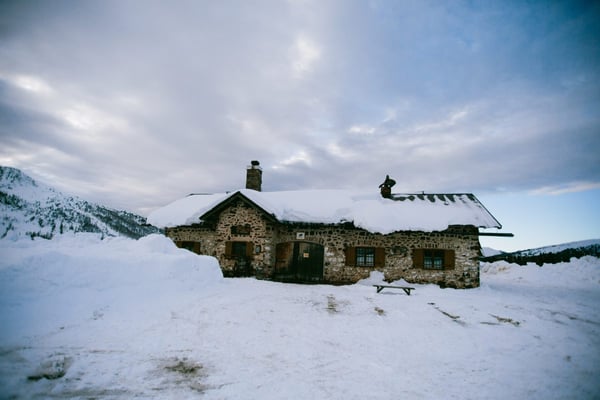As a builder or investor, you can ensure your properties are weatherized properly by paying attention to a few key areas, particularly if your builds are in cold climates or places with changeable weather.
Insulation
Insulation is one of the biggest components of weatherization as it encompasses an entire home or building and directly affects the home’s inhabitants. Not only does insulation keep heat inside in winter, it also helps to keep the heat outside in summer, while the AC keeps things cool indoors. Without proper insulation, that AC wouldn’t be nearly as effective. There are numerous types of insulation on the market, including fiberglass, foam, and cellulose, just to name a few.
Fiberglass is the most common insulation type and consists of very fine glass fibers. Generally, it is found in rolls which are placed inside of the home’s framing, though loose-fill insulation (installed using a blowing machine) is another option. Foam based insulation is another popular choice due to its fast installation time and thorough and dense spreading ability. It can be much more expensive than fiberglass, but is made to be non-toxic and non-flammable, making it a popular choice in larger developments.
If a green option is important to you, cellulose may be the way to go. Cellulose insulation is made of recycled paper such as newsprint and is known for its high recycled content, sometimes as much as 85%. It is also a versatile option as it can be packed tightly or loose-filled.
Whatever insulation option you go with, look into the material’s R-value as well as the R-value needs based on your region or climate. R-value simply refers to a material’s thermal resistance - its resistance to heat flow. The higher the R-value of a material, the better it is as an insulator.
Moisture
Another weatherization concern is moisture, particularly in areas with high humidity, or a lot of rainfall or snowfall. Most water vapor enters a home through the air but can happen in more direct ways such as water leaking through masonry or openings in and around a home’s foundation. Moisture can also cause problems such as mold growth which can be dangerous. To prevent excess moisture in basements, proper installation of gutters and spouts is crucial, as is ensuring the surrounding earth slopes away from the home and not towards it.
During construction, rubberized membranes are another good way to help keep dampness and excess moisture from seeping into the home. And to help prevent moisture from coming through small openings or cracks, weather stripping and weatherproofing around doors and windows is another inexpensive way to make a big impact.
Ventilation
When sealing, insulation, and moisture control are addressed as part of a home’s weatherization, various chemicals and compounds are introduced into the home. This is why ventilation is another key component of overall weatherization. On the less expensive side, spot ventilation is a great option. Spot ventilation uses things like ceiling fans, kitchen hood ranges, and built in bathroom fans to remove excess moisture as well as indoor air pollution from a home.
On the other hand, whole house ventilation is another, more thorough option. Whole house ventilation systems use a series of ducts and fans to expel stale air from a home, and introduce fresh air. Some common systems include exhaust ventilation, which depressurizes a building of its polluted air, and supply ventilation which pressurizes a building with fresh air. A balanced system introduces and expels equal amounts of each in a uniform manner.

Recent Posts
- Spec Home Loans: Complete Guide to Construction Financing for Builders
- Spec Construction Loans: A Spec Line of Credit Is Worth the Paperwork
- Spec Homes and Pre-Sale Homes: Relative Benefits for a Spec Builder
- Spec Construction Success: Insights for the Investor Builder
- How Is a Spec House Different From Other Kinds of House Construction?
